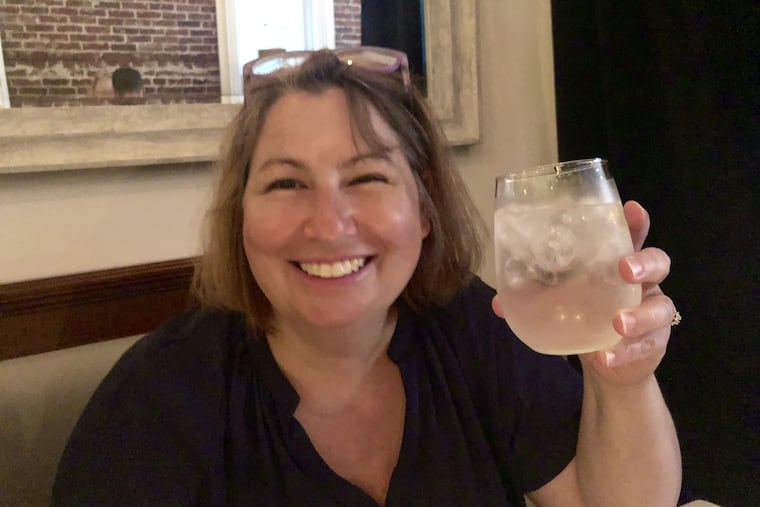Why are nice restaurants pouring lukewarm water? | Craig LaBan
The good old ice pitcher has been kicked to the curb.

When a reader recently asked if I prefer ice or no ice in my water, I had to wonder: Have you been speaking with my wife?
Elizabeth likes her water especially cold and is now somewhat obsessed with ordering extra ice. This happens the moment we sit down because she now assumes restaurant water just won’t be cold enough. And naturally, this has become the stuff of family lore as tabletops laden with half-melted ice glasses follow in her wake. At restaurants lately, one of the biggest tells that I’ve been made by the staff is an enthusiastic embrace of Elizabeth’s “ice thing,” which can result in such constant cube refreshment that it is only matter of time before someone simply rolls out an Igloo chest and leaves it beside our table. (Really, please don’t.)
But, as with so many things, I’ve come to learn that Elizabeth is (mostly) right. I personally do not like ice in my water — a preference that dates to my younger days in Europe, where ice in water is not the norm. But I’ve come to realize lately that she is absolutely correct about this basic fact: There has been a luke-warming water trend in local restaurants that has caused me to begin asking for extra ice, as well. In the recent months alone, I’ve had less than chilly water from a long list of places I otherwise consider to be very good — High Street on Market, Royal Boucherie, Musi, Hungry Pigeon, and the new Olly, just to name a few.
One of the prime culprits? The filtered water carafe trend has kicked the good old ice pitcher to the curb. And while filtered water has many commendable benefits, pre-poured carafes risk warming if not promptly poured. I’m all in favor of restaurants filtering their water in lieu of pushing bottles. It’s far better for the environment. A good system makes water that tastes just as good as the bottled competitors. And it has also replaced one irritating flashpoint of passive-aggressive server upselling (“Would you like sparkling, still, or … ahem, tap?”) with a hospitality opportunity to offer guests something nice for free, or a nominal small charge — even if systems can cost restaurants about $5,000 a year in equipment rentals plus considerably more lost revenue from bottle sales. Ellen Yin of Fork and High Street on Market estimates that they’ve lost over $20,000 in bottled water sales annually since moving to the popular Vero Water system, which services about 50 other Philly restaurants: “We waste so many bottles. I felt it was more responsible,” she said.
To charge or not charge for filtered water is another hot question altogether, and Vero’s cofounder (Penn Valley native) Michael Servetnick says Philly and L.A. are the only two holdouts among its national markets to resist paying fees for filtered water. But with summer’s heat upon us, I might pay an extra penny for a frosty draft. Because I’m more aware of the tepid water problem than ever. Far too many carafes, which may well be a very cold 37-degrees out of the filter, taste like they’ve been poured too far in advance.
“If we had more space we’d keep the bottles in the fridge,” said Scott Schroeder of Hungry Pigeon, where an entire table of prefilled bottles sits at room temp for the morning café service. Schroeder admits he is also trying to break himself of the tooth-numbing habit of chewing ice. Unless, of course, it’s “booze ice. I give myself that.”
At Royal Boucherie, servers are instructed to pour the filtered water over strained ice that’s also made from filtered water. But our first pour of H2O was noticeably ice-deficient, and “unfortunately a mistake,” said co-owner Nicholas Elmi.
But even that move strikes some who pay for top-of-the-line filters like Vero as counterproductive: “Our ice isn’t filtered from the same water source and is not as ‘filtered’ as the Vero … which has five filters,” says Yin. “So theoretically it’s like serving ice with bottled water.”
Yin and others have certainly made a responsible commitment to the environment and good taste by opting for filters over the potential profits of bottles. But the noble cause would be all the more easy to swallow if those filtered carafes could also arrive with a frigid, summer-slaying chill. Even then, would Elizabeth still ask for extra ice? Keep counting your cubes, because I make no promises.